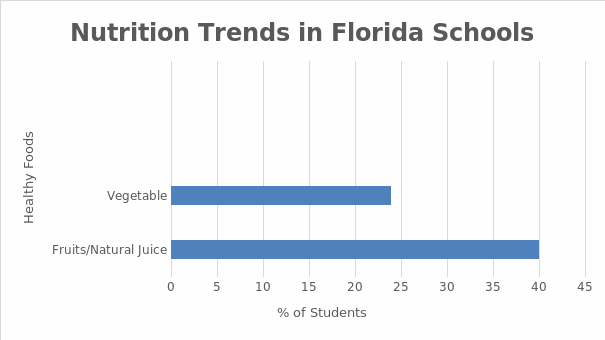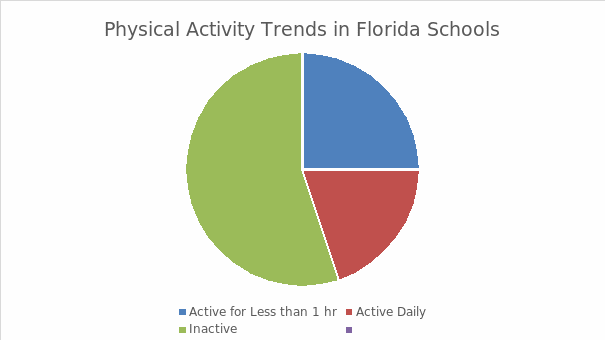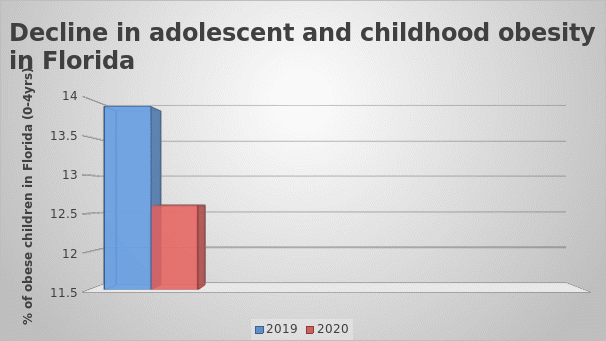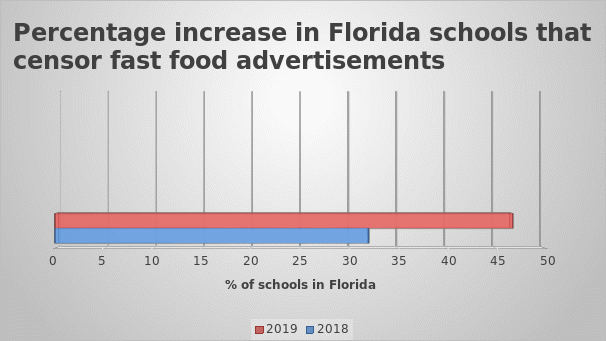Introduction
From the data collected in a 2019 CDC study, 15.4% of youth in the state of Florida between 10-17 years old, are considered overweight. On the other hand, 11.1% from the same demographic are considered obese. These statistics put the state of Florida at position 9 out of the total 50 states in prevalence. 14.2% of high school students in the state and 13.9% of children between 2-4 years old are also considered obese. The high number of childhood obesity cases in Florida is attributed to various factors, including unhealthy dietary behaviors, physical inactivity, genetics, among others.

Nutrition Trends in Florida Schools
Statistics from the study indicate that over 60% high school students had vegetables or fruits less than twice each day, while only 23.9% of them consumed vegetable at least once each day. The prevalence of these unhealthy trends in nutrition were determined by the study to be as a result of inadequate provision of healthy foods and beverages for sale by schools.

Physical Activity Trends in Florida Schools
Data from the study shows that only 25% of high school students participated in physical activities for at least an hour each day. Similarly, less than 20% of the students took part in the school’s physical education programs. These statistics are as a result of students leading a sedentary lifestyle, where they spend copious amounts of time each day watching TV, playing computer and console games, and many more scouring the internet and social media.

Decline in adolescent and childhood obesity in Florida
The CDC study reported a decline in the rates of childhood and adolescent obesity in toddlers between 2-4 years old, between 2019 and 2020 (from 13.9% to 12.6%). This largely due to the efforts of the state’s program, Special Supplemental Nutrition.

Percentage increase in Florida schools that censor fast food advertisements
A slight increase in schools prohibiting the promotion or advertisement of fast foods, soft drinks, and candy was reported by Yavari and Pritzl’s 2020 study (from 32% to 46.7% between 2018 and 2019). More schools in Florida joined this cause after awareness campaigns against fast food advertisements within school premises were ran by the state.

